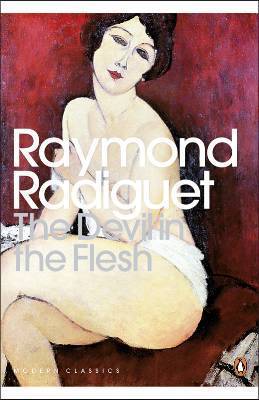
The Holy Terrors
Book Description
Wrestling with shadows and dreams, 'The Holy Terrors' explores the tangled lives of a group of artists on the brink of madness. As their passions ignite, love crumbles into chaos, and ruthless ambition takes the stage. Amidst dazzling surrealism and relentless creativity, friendships fray and secrets twist like dark vines. Each character grapples with haunting desires that blur the lines between genius and insanity, pulling them deeper into a world that challenges the very essence of their existence. Will their art save them, or will it be the very source of their destruction?
Quick Book Summary
"The Holy Terrors" by Jean Cocteau is a surreal and haunting novel that ventures into the inner worlds of a group of young artists and thinkers, blurring the boundaries between genius and madness. The story weaves through the lives of Paul, Elisabeth, and their close-knit circle, who are enthralled by their own artistic ambitions and complex relationships. Cocteau crafts a landscape where the pursuit of artistic expression is fraught with emotional turmoil, jealousy, and obsession. The novel explores how the allure of creativity can drive individuals to both brilliance and destruction, testing the limits of friendship, love, and identity. The characters become entwined in a psychological game that spirals increasingly out of control, with their passions fueling both their art and their undoing. The book examines whether art is a path to salvation or a force that consumes and devastates.
Summary of Key Ideas
Table of Contents
Surrealism and the Artistic Imagination
Set against a backdrop shimmering with surrealism, "The Holy Terrors" follows siblings Paul and Elisabeth as they create a hermetic, dream-like world within their Parisian home. United by a childhood pact, they cultivate an insular bond that excludes the outside world. Their shared obsession with artistic invention and theatrical games becomes the backbone of their relationship, transforming their lives into a perpetual tableau vivant. The siblings' room becomes both sanctuary and stage—an incubator for their creative fantasies and a crucible for their disturbing desires.
Obsession and Destructive Passion
As the siblings' enclave attracts outsiders—namely Gérard and Agathe—the fabric of their fantasy world begins to fray. The new arrivals become unwitting participants in Paul and Elisabeth’s elaborate, manipulative games. Obsession drives the narrative forward: what starts as innocent play devolves into dominance, jealousy, and emotional warfare. The fragility of relationships intensifies as desire and ambition threaten to shatter the careful balance maintained by the siblings.
Blurring of Reality and Fantasy
Cocteau masterfully blurs the lines between reality and hallucination, plunging his characters—and the reader—into a realm where distinctions melt away. The siblings drift between dreams and waking life, their grotesque competitions and theatrical acts undermining the certainty of what is real. The house itself morphs into a labyrinth, echoing the characters’ internal confusion and illustrating how easily genius can tip into madness when tethered to fantasy.
Power Dynamics and Manipulation
Throughout the novel, Cocteau examines the dynamics of power—how creative inspiration can foster both connection and manipulation. The siblings exert control through psychological games, enforcing allegiances and drawing lines of loyalty that isolate outsiders. Their world thrives on secrets and rituals, but this exclusivity breeds tension, rivalry, and ultimately betrayal. The pursuit of artistic greatness both elevates and warps the characters, highlighting the intoxicating—yet perilous—nature of true creativity.
The Cost of Genius
In the devastating climax, the story interrogates whether art brings salvation or destruction. The emotional intensity and unchecked ambition ultimately careen into catastrophe. Cocteau reveals how the quest for creative genius is shadowed by loss and self-destruction; the fragile line between brilliance and insanity is ultimately shattered. The characters are left to grapple with the ruins of their obsessions, having discovered that the gifts of imagination can be both a source of beauty and a curse that threatens their very existence.
Download This Summary
Get a free PDF of this summary instantly — no email required.





